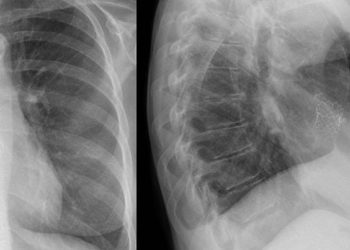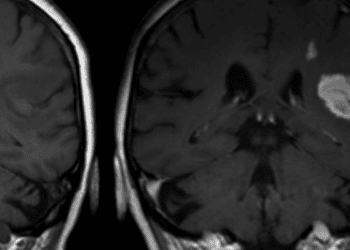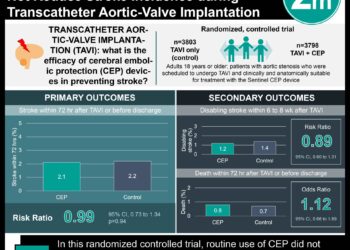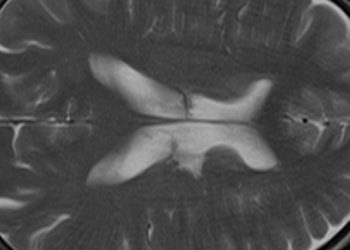2 Minute Medicine Rewind October 3, 2016
Changes in moderate-to-vigorous physical activity among older adolescents
While the Centers for Disease Control and Prevention recommend at least 60 minutes of moderate to vigorous physical activity (MVPA) for adolescents daily, data suggests that this goal is not being met. The purpose of this study was to examine determinants of objectively measured MVPA (assessed using accelerometers) over 4 years in young adults in the US. The authors used a combination of accelerometers, self reported physical activity, BMI, and other variables among a longitudinal cohort (n = 561) of adolescents to examine activity levels. The researchers found that less than 9% of participants met the recommended 60+ minutes/day MVPA. MVPA was also greater in males vs females (p < 0.001), Hispanics vs White (p < 0.001), and increased BMI was associated with decreased MVPA. In young adults, attending a 4-year college and living on campus were associated with higher levels of MVPA when compared to those not attending school or living off campus. The authors concluded that high-school students in general, engaged in little MVPA and maintained this low level through the transition into adulthood and that social context may play a large role in activity levels and may serve as a target for intervention.
Effectiveness of fluticasone furoate–vilanterol for COPD in clinical practice
The evidence of chronic obstructive pulmonary disease (COPD) was established from randomized control trials with strict criteria and raised questions as to whether the results from these trials would be generalizable to clinical practice. In a controlled effectiveness trial, 2799 patients with COPD were randomly assigned to once daily inhaled combination of fluticasone furoate and vilanterol (fluticasone furoate – vilanterol group) or to usual care. The primary outcome of interest was the rate of moderate to severe exacerbation within 1 year before the trial and secondary outcomes were analyzed based only on the entire trial population and included the rate of first exacerbation, annual rates of primary care contact, and the rate of serious adverse events. The rate of moderate or severe exacerbation was significantly lower by 8.4% with fluticasone furoate – vilanterol group compared to usual care (95% CI: 1.1 to 15.2, p = 0.02). There was no significant difference between the annual rate of COPD related contact with primary care between groups or in the rate of first exacerbation in the time to event analysis between treatment groups. The incidence of adverse events was similar in both groups however a trend towards an increased number of cases of pneumonia in the group in the treatment arm without an inhaled glucocorticoid was noted. The authors concluded that in patients with COPD and a history of exacerbations, once daily treatment regimen of combined fluticasone furoate – vilanterol was associated with a lower rate of exacerbations than usual care without a greater risk of adverse events.
“Housing First” for homeless youth with mental illness
Although “Housing First” has been showed to be effective in improving housing stability in homeless individuals with mental illness, its effectiveness has not been tested in homeless youth. The purpose of this report was to test the effect of “Housing First” on housing stability in 156 homeless youth aged 18-24 in a 24 month randomized trial of “Housing First” in 5 Canadian cities. 87 of these subjects received “Housing First” and 69 received treatment as usual. The majority of data was collected by in-person interviews and the primary outcome of the study was housing stability. In an adjusted analysis, youth in “Housing First” were stably housed a mean of 437 out of 645 (65%) days compared to youth in treatment as usual group who were stably housed a mean of 189 out of 582 (31%) resulting in an adjusted mean difference of 34% (95% CI: 24% to 45%; p< 0.001). The authors concluded that “Housing First” was associated with improved housing stability in homeless youth with mental illness.
Association of nausea and vomiting during pregnancy with pregnancy loss
Although nausea and vomiting are common symptoms of clinical pregnancy, a prior study suggested that the absence of these signs may be a possible marker of pregnancy loss. The purpose of this study was to examine the association of nausea and vomiting during pregnancy with pregnancy loss. This study was an ad hoc secondary analysis of patients recruited in a multi-center randomized placebo-controlled trial of aspirin use to prevent pregnancy loss (Effects of Aspirin in Gestation and Reproduction study). A total of 797 women have bHCG confirmed pregnancy and 188 of these pregnancies (23.6%) ended in a loss. At gestational week 2, 73 out of 309 women reported nausea without vomiting and 11 out of 409 reported nausea with vomiting. By week 8, the proportions increased to 254 of 443 and 118 of 443 respectively. Furthermore, women with nausea had a hazard ratio of 0.50 (95% CI: 0.32 to 0.82) for pregnancy loss, while those with vomiting had a HR of 0.25 (95% CI: 0.12 to 0.51). Among those with clinical pregnancy, nausea had a HR of 0.44 (95% CI: 0.26 to 0.74) and vomiting had a HR of 0.20 (95% CI: 0.09 to 0.44) The study concluded that among women with 1 or 2 prior pregnancy losses, nausea and vomiting were common early in pregnancy and associated with a reduced risk of loss and there was an inverse relationship between symptoms of nausea and vomiting with pregnancy loss.
Time to treatment with endovascular thrombectomy and outcomes from ischemic stroke
Although the clinical benefit of endovascular thrombectomy has been established for patients with an ischemic stroke, the relative benefit compared to medical therapies and timing of intervention remains uncertain. The purpose of this study was to characterize the period in which endovascular thrombectomy is associated with benefit and the extent to which treatment delay is related to mortality, functional outcomes, and symptomatic intracranial hemorrhage. This was a pooled meta-analysis that reviewed findings from 5 randomized control trials comparing patients who received either endovascular thrombectomy and medical therapy, or medical therapy alone. The primary outcome was degree of disability at 3 months and secondary endpoints included mortality at 3 months and functional independence. A total of 1287 patients were included and 634 received endovascular thrombectomy along with medical therapy and 653 patients received medical therapy alone. 1287 patients were included in the study where 634 patients of the total received endovascular thrombectomy along with medical therapy and 653 patients received medical therapy alone. Endovascular thrombectomy was associated with a significantly lower degree of disability at 3 months compared to medical therapy alone (mRS = 2.9, 95% CI: 2.7 to 3.1; vs. 3.6, 95% CI: 3.5 to 3.8 respectively). Furthermore, the authors reported that the degree of benefit from endovascular thrombectomy declined in a step-wise fashion with longer durations from symptom onset to arterial puncture (3 hours: cOR 2.79, 95%CI: 1.96 to 3.98; 6 hours: cOR 1.98, 95% CI: 1.30 to 3.00; 8 hours: cOR 1.57, 95% CI: 0.86to 2.88). As a result, the authors concluded that in patients with large vessel ischemic stroke, earlier treatment with endovascular thrombectomy and medical therapy compared with medical therapy alone was associated with lower degrees of disability at 3 months.
Image: PD
©2016 2 Minute Medicine, Inc. All rights reserved. No works may be reproduced without expressed written consent from 2 Minute Medicine, Inc. Inquire about licensing here. No article should be construed as medical advice and is not intended as such by the authors or by 2 Minute Medicine, Inc.







